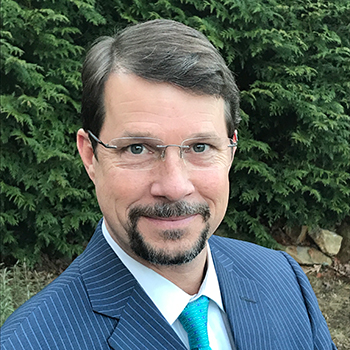
U.S. IOOS Director Carl Gouldman
Carl Gouldman took the helm as director of the U.S. Integrated Ocean Observing System (IOOS®) Program in February 2017. Prior to becoming the director, Carl served as the deputy director of the program since June 2014. NOAA is the lead federal agency for implementing the U.S. IOOS, as called for in the Integrated Coastal and Ocean Observation System Act of 2009. U.S. IOOS is a coordinated network of people and technology that work together to generate and disseminate continuous data on our coastal waters, Great Lakes, and oceans.
Carl joined NOAA as a program coordinator at the Coastal Services Center in 2000 and then spent a year at the National Ocean Service headquarters staffing the NOAA Ocean Council during the 2003-2004 NOAA review of the U.S. Commission on Ocean Policy Report. He joined the IOOS program full time in 2004 as the first IOOS permanent employee. He has been a member of the IOOS leadership team since then and served as a Steering Team member for the U.S. IOOS Summit in 2012 and as acting deputy director for the Center for Operational Oceanographic Products and Services (CO-OPS) for four months in 2013.
Prior to NOAA, Carl worked in the coastal recreation sector teaching sailing, kayaking, and windsurfing before spending three years working to become an education senior manager at the Chesapeake Bay Foundation, where he led field programs teaching students about bay ecology and conservation. He holds a Bachelor of Science in political science from Duke University and a master’s degree (Master of Engineering Management) in coastal environmental management from Duke University’s Nicholas School of the Environment. Carl lives in Bethesda, Maryland, with his wife, has two children, and enjoys spending as much free time outdoors as possible. He is a lifelong recreational boater, fisherman, surfer, and hunter, and he claims to have learned to read a "tide chart" by the age of 10 to plan fishing and crabbing trips in the outer banks of North Carolina. Carl grew up in Virginia and has called the following states as ‘home’ at some point during his journey to NOAA: Virginia, Massachusetts, North Carolina, Maryland, South Carolina, Hawaii, and Colorado.
 Official websites use .gov
A .gov website belongs to an official government organization in the United States.
Official websites use .gov
A .gov website belongs to an official government organization in the United States.
 Secure .gov websites use HTTPS
A lock or https:// means you’ve safely connected to the .gov website. Share sensitive information only on official, secure websites.
Secure .gov websites use HTTPS
A lock or https:// means you’ve safely connected to the .gov website. Share sensitive information only on official, secure websites.
